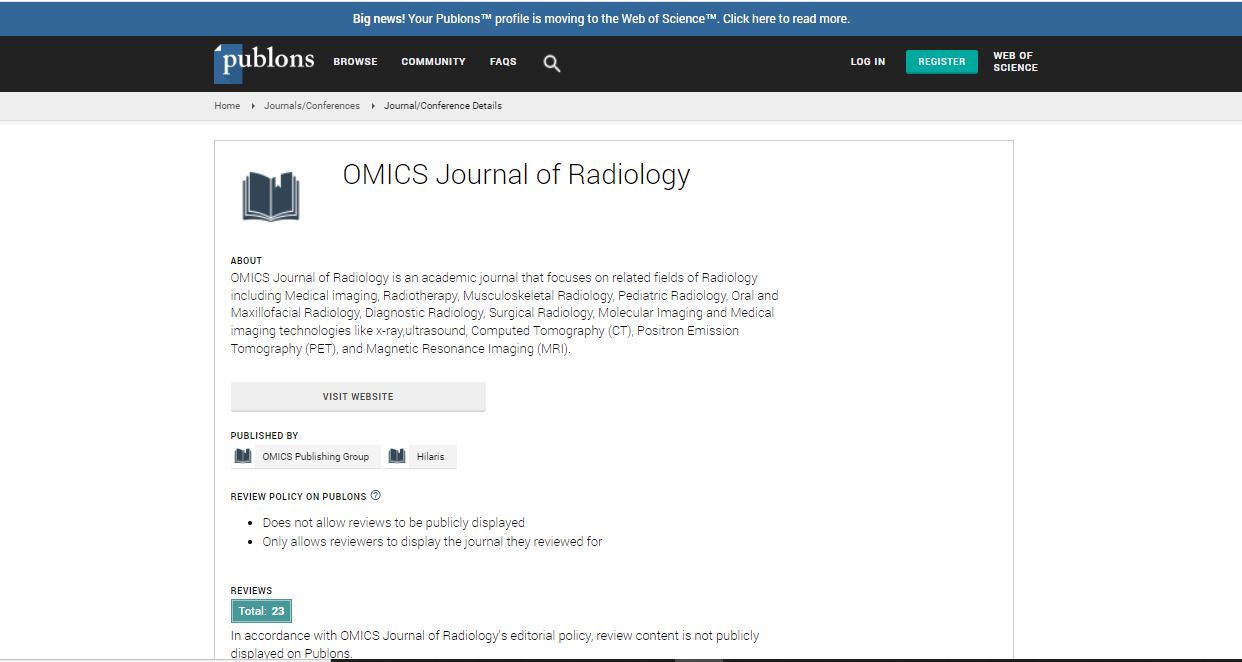Research Article
Interventional Cardiology-Eight Years of Practice: Do Increased Experience and Technological Evolution Lead to Undertaking More Difficult Cases and Higher Patient Doses?
Tsapaki V1, Kottou S2, Fotos N1, Nikolopoulos D3* and Patsilinakos S11Konstantopoulio General Hospital, Nea Ionia of Athens, Greece
2Medical Physics Laboratory, National and Kapodistrian University of Athens, Athens, Greece
3Piraeus University of Applied Sciences (TEI of Piraeus), Electronic Computer Systems Engineering, Athens, Greece
- *Corresponding Author:
- Nikolopoulos D
Piraeus University of Applied Sciences (TEI of Piraeus)
Electronic Computer Systems Engineering
Athens, Greece
Tel: +0030-6977-208318
E-mail: dniko@teipir.gr
Received date: December 25, 2016; Accepted date: January 20, 2017; Published date: January 27, 2017
Citation: Tsapaki V, Kottou S, Fotos N, Nikolopoulos D, Patsilinakos S (2017) Interventional Cardiology-Eight Years of Practice: Do Increased Experience and Technological Evolution Lead to Undertaking More Difficult Cases and Higher Patient Doses? OMICS J Radiol 6:248. doi: 10.4172/2167-7964.1000248
Copyright: © 2017 Tsapaki V, et al. This is an open-access article distributed under the terms of the Creative Commons Attribution License, which permits unrestricted use, distribution, and reproduction in any medium, provided the original author and source are credited.
Abstract
In our dedicated catheterization laboratory, within the years 2009–2016, 8286 Interventional Cardiology (IC) procedures were performed by two interventional cardiologists with more than 10 years of experience. There were 5469 Coronary Angiographies (CA) and 2817 Percutaneous Coronary Interventions (PCI). The purpose was to analyze annual patient radiation data, investigate trends and compare with national and international literature and Dose Reference Levels (DRL). Patient doses were determined in terms of: kerma-area product PKA, fluoroscopy time FT and reference air-kerma Ka,r. Concerning the number of frames F, in 1.8% of CA cases and in 40% of PCI cases, was higher than Greek DRLs. PKA, in 13% of CA cases and in 31% of PCI cases, was higher than Greek DRLs. In 0.4% of CA cases, the calculated effective dose values were higher than 40 mSv, whereas in 0.9% PCI cases higher than 80 mSv. In 0.2% of CA cases, PSD was higher than 2 Gy and in 0.04% cases higher than 3 Gy. In 13% of PCI cases, PSD was higher than 2 Gy, in 3% higher than 3 Gy and in 0.4% higher than 5 Gy. FT in 19.2% of CA cases and in 32% of PCI cases was higher than Greek DRLs. The radiation dose trends in IC procedures in this hospital, for the last 8 years, suggest that patient radiation doses in CA are less variable through the years compared to PCI. Doses are comparable to the literature and median values are lower than Greek and European DRLs. The practice of the well experienced interventionalists, with the support of evolving technology, shows that simpler procedures, like CA, need slight shorter FT, while the most demanding procedures like PCI, appear to require more frames without increasing in FT or PSD.

 Spanish
Spanish  Chinese
Chinese  Russian
Russian  German
German  French
French  Japanese
Japanese  Portuguese
Portuguese  Hindi
Hindi 
